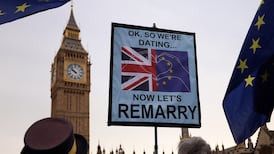The notion that our national heritage is limited to “old buildings” – very valuable as these often are – has long been obsolete. The Heritage Act (1995) definition includes “monuments, archaeological objects, heritage objects, architectural heritage, flora, fauna, wildlife habitats, landscapes, seascapes, wrecks, geology, heritage gardens, and parks and inland waterways”.
The remarkably high profile of the natural world in this description was probably not, however, widely shared at the time. According to early research by the Heritage Council, established by the Act, only 3 per cent of Irish people associated the environment with heritage in 2000.
But more recent surveys show that figure rising significantly. Some credit for this and other remarkable shifts in awareness must go to repeated innovations by the council, since 2005, in developing National Heritage Week, which this year runs from last Saturday, August 14th, to Sunday, August 22nd.
At a moment when celebration is very difficult for most of us, this is a national occasion to be welcomed
Ireland was both the first country to expand the EU initiative of Heritage Days to a week, and to include in it explorations of local biodiversity.
From the outset, the council did not impose national programmes, but encouraged local communities, groups and even families to organise their own activities, celebrating the heritage that mattered most to them.
Rarely practised
This bottom-up approach, often preached but rarely practised, means that people all over the country have taken ownership of the week, and this is reflected in the great diversity of its hundreds of events in recent years.
The council has further stimulated diversification this year by creating categories such as “Heritage Newcomers”, for those who have not participated to date, and “Heritage Sharing”, for communities or individuals who may not yet feel included in local cultures. It also reaches out to both older and younger people.
The pandemic has inevitably shifted events away from public activities, and towards projects that can be shared online, though both are included, subject to public health advice.
The range of projects on offer this week is more varied than ever. There really is something here for every citizen. At a moment when celebration is very difficult for most of us, this is a national occasion to be welcomed warmly and worthy of our involvement.









